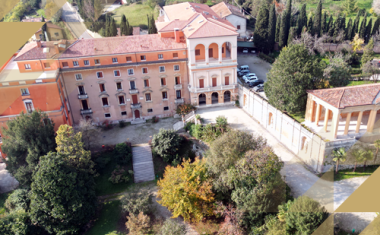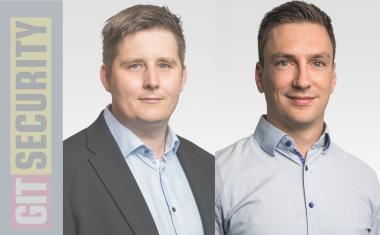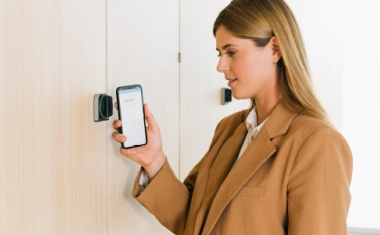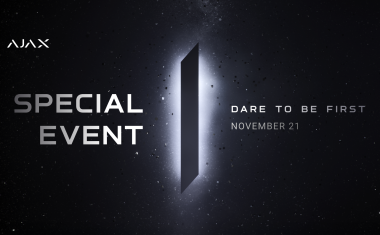Preventing Airside Incursions with Radar-Based Situational Awareness
What happens when someone breaches an airport perimeter? How do airports spot the difference between a lost tourist, a determined protestor, and a genuine threat, especially on a foggy night when every second counts? In this interview, GIT SECURITY speaks with Simonas Mikuzis of Navtech Radar to explore how their radar-based situational awareness systems are transforming perimeter protection and operational safety at airports. From real-time, 360-degree monitoring to the integration of artificial intelligence, Simonas shares insights into the latest innovations, real-world successes, and the future of airport security.
GIT SECURITY: What are the key challenges airports face today with airside incursions – and how does Navtech Radar help mitigate them?
Simonas Mikuzis: Airside incursions are becoming increasingly common and complex. These incidents are not always malicious – we've seen everything from confused individuals walking onto runways to high-profile protestors breaching perimeters. But regardless of intent, the impact is the same: operations come to a halt, people are put at risk, and safety is compromised.
The real issue is that many airports still lack technology-driven situational awareness. Without that, they might not know about an intrusion until it's too late – when protestors breach a perimeter fence and enter restricted areas unnoticed, for example. Our Integrated Security Solution fills that gap. It gives operators real-time, 360-degree visibility of their site. It doesn't just detect intrusions; it tracks them continuously, even in poor weather or darkness, and supports fast, informed response to keep personnel, passengers – and yes, even protestors – safe.

How does AdvanceGuard stand apart from traditional security technology?
Simonas Mikuzis: Traditional systems are frequently hindered by adverse weather, variable lighting, and complex site layouts. Many, once breached – such as perimeter fences – offer no further intelligence. They can't tell you how many intruders there are or where they're heading. Navtech AdvanceGuard uses high-definition radar and intelligent software to monitor the entire site – not just the perimeter – 24/7. It works in all conditions and automatically alerts operators when there is a breach. Just as crucially, it provides context: how many people or vehicles are involved, where they've come from, and where they're going. This level of situational awareness is what sets it apart.
Can you give an example of where this kind of system has made a difference?
Simonas Mikuzis: There are numerous examples, though airports understandably prefer not to disclose specific incidents. However, I can say that in several cases, our security solution has provided rapid detection and tracking of intruders – including during night-time – which allowed security teams to act swiftly and resolve the situation with minimal disruption.
One well-publicised example not related to us is a recent incident at a European airport, where a half-naked man ran onto the runway at night and was extremely difficult to locate. If a radar-based security solution had been in place, tracking that individual would have been far easier. At Shannon Airport, where our system is deployed, we understand that a recent attempted incursion was swiftly detected and effectively contained thanks to AdvanceGuard.
What made Shannon Airport choose Navtech Radar in the first place?
Simonas Mikuzis: Shannon had tried other technologies – particularly optical systems – but they didn't deliver the performance needed. The airport is a high-profile site and it's faced multiple protest-related incursions over the years. Managers wanted a solution that provided not just perimeter protection but full situational awareness. That's when they approached us.
We worked closely with their team to install a system that was scalable, adaptable, and future-proof. Navtech AdvanceGuard was initially deployed to monitor the entire airside and 10 metres beyond the perimeter, and over time, it's grown with their needs – integrating with VMS systems, ADS-B and Blue Force tracking. It's a great example of how partnership can drive innovation.
How has Shannon Airport responded to the system?
Simonas Mikuzis: The feedback has been excellent. John Francis, former Head of Security at Shannon Airport, said it best: "The precision and scope of Navtech Radar's AdvanceGuard system, with its ability to spot and track intruders with pinpoint accuracy, to reduce nuisance alarms from wildlife and to distinguish between friend and foe, has greatly improved the security of our perimeter and the situational awareness of our operators." It's a testament to how well the system fits the operational demands of a modern, complex airport.
Your HDR series was launched in 2017. What developments have followed since?
Simonas Mikuzis:The technology has matured significantly. The current generation of radar is robust and proven, and we've continually evolved the solution based on customer needs. Our Integrated Security Solution today is far more than just perimeter detection – it's a full airside safety and operations tool. It integrates seamlessly with video management systems, supports CP line monitoring, and provides valuable insight for runway incursion prevention.
We've also developed our own integrated Blue Force tracking, which gives complete visibility of authorised personnel and vehicles on site. This improves both security and efficiency.
With AI evolving rapidly, how do you see security solutions like yours developing?
Simonas Mikuzis: Artificial intelligence is a topic of significant discussion, particularly in security solutions where it progresses towards identifying patterns and detecting anomalies. While radar itself is a physical sensor, the data processed by our proprietary software already utilises AI to perform additional object identification, thereby reducing false alarms.
The goal isn't to replace human decision-making – it's to give operators more accurate information faster. AI helps systems learn what's normal and what isn't, so we can filter out distractions and focus on real threats. Ultimately, it's about making security more reliable and more efficient.













